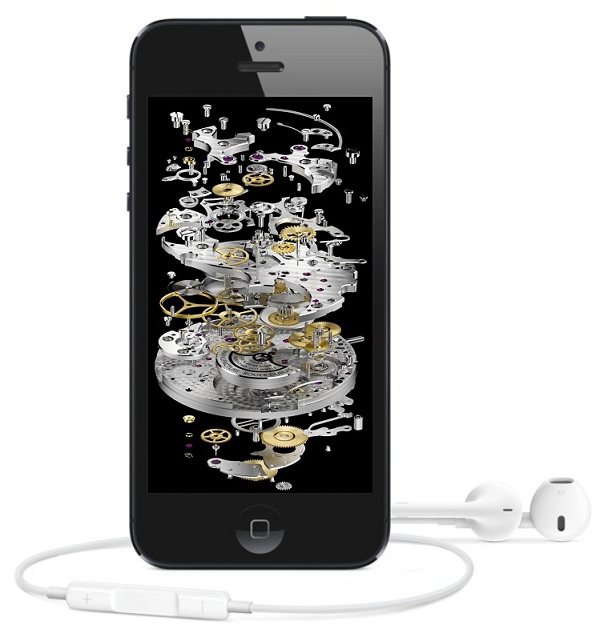
How is the iPhone 5 a lot like luxury watches? First, why compare the iPhone 5 to luxury watches? The iPhone has become the de facto phone of choice for people who can choose whatever phone they like. That doesn’t necessarily mean they only have an iPhone, but it is uncommon to find consumers of high-end products who don’t have an iPhone for daily use. No doubt Apple achieved this impressive market position with a slick user interface and useful product, but the design of the iPhone had a lot to do with it. Apple has succeeded where many others have not with a product that looks good to the eyes and feels good in the hands. It is also useful on a daily basis and tells people who see you with one a little bit about what your personality may be like. In a nutshell, the iPhone is a sexy tool – a concept invented by the watch industry. Let’s see how Apple is following the lead of high-end watch makers when it came to designing and constructing the newest iPhone.
The quality and construction of the iPhone 5 is arguably the best any iPhone has experienced. Apple made it easier to use and nicer to hold. It has an attention to detail and tactile user experience far and away beyond what any other mass-produced mobile phone can claim. So where has it followed the lead of high-end watches the most closely?
Organic Curves
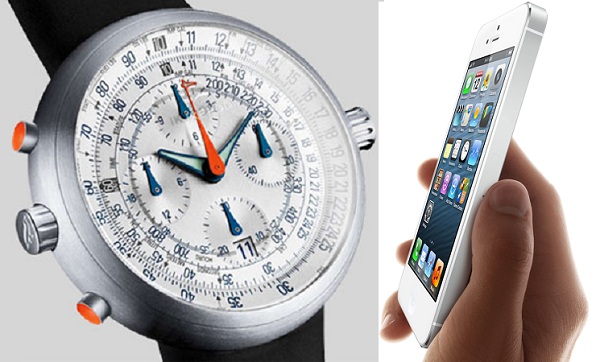
While the iPhone 5 might resemble the shape of a candy bar, it employs a series of graceful curves and rounded edges. The mastery of the design was in combing the technical look of a sophisticated modern gadget with an item that does not clash with the organic look of the human body. Use of organic curves in products meant to be held and seen on one’s person is an extremely effective way to help something feel warmer and less alien. It is difficult to find harsh edges on the iPhone, and it does not look or feel unnatural when in one’s palm. Likewise, high-end watches have employed the same design concept for years – creating wearable tools that do not disrupt the natural rhythmic curves of our organic bodies.
Beveled Edges
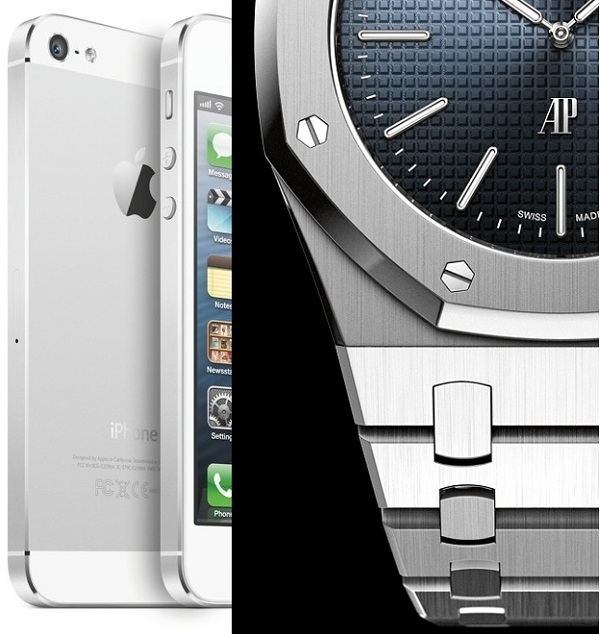
One time while in Switzerland, I recall hearing about a practical reason developed by historic watch makers that involved beveling the edges of parts in mechanical movements. Though that reason has likely long since been forgotten. Today, beveling the edges of metal and other items has mostly aesthetic value. Beveled edges look better and help join two areas together for a smoother visual transition. Beveling edges are often highly polished and can further add a welcome shine and sparkle to products with otherwise mostly non-polished surfaces. Many high-end watches as well as the edges of the new iPhone 5 employ beveled edges for the precise same purposes. Apple was clever to use this design feature and I think it helps the iPhone 5 looks as much like a luxury product as possible.
High-Quality Touch & Feel
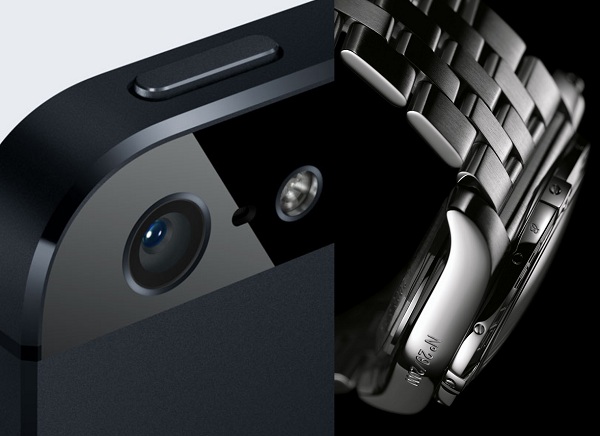
Often times the elements that makes a watch “luxury” are the materials it is made from. You don’t find plastic in luxury timepieces, but you do find a lot of high quality metals as well as precious materials. Use of high quality materials isn’t enough though. Those materials need to be finished and polished properly for the best effect. The iPhone has always been an incredibly solid feeling phone, but with the iPhone 5, Apple tells us that the phone is entirely made from aluminum and glass (more on that below). Metal and a hard crystal is exactly what most good watches are make out of. Like high-end watches, the iPhone 5 also makes use of various finishes and very well fitting parts. It will also likely feel very soft and familiar when it is being handled. Harsh edges and an awkward feel are something the best watches don’t have – and neither will the iPhone 5.
Hard Crystal
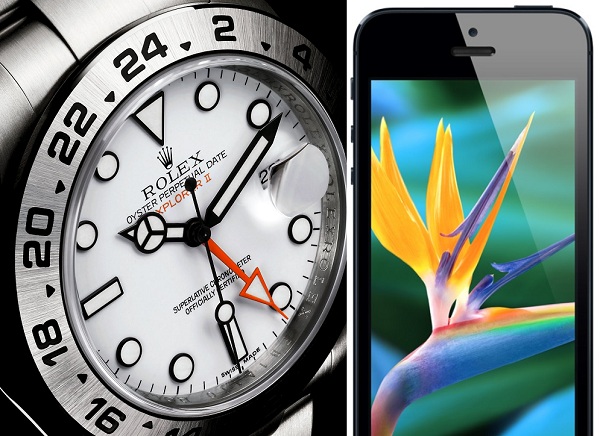
Virtually all modern high-end watches have a crystal made from very hard synthetic sapphire crystals. While nothing new these days, use of this material revolutionized the construction of high-end watches by making crystals extremely difficult to shatter and very scratch resistant. The iPhone has always used rather good glass over their screens but the iPhone 5 makes uses of the brand new Gorilla Glass 2. Gorilla Glass is a light and hard durable type of glass used in a range of mobile phones and other applications (such as TV screens). Gorilla Glass 2 is about 20% thinner than the original, with the same durability properties. It looks like Gorilla Glass has a hardness rating of about 700 Vickers, which is pretty good. Most sapphire crystals however have a hardness rating of over 2000 Vickers. The interesting news is that the iPhone 5 does in fact use some sapphire crystal in its construction. While Gorilla Glass 2 is used over much of the iPhone 5 body, sapphire crystal is used over the camera lens for clarity and protection.
Slim Yet Substantial Design

The new iPhone 5 is thinner and longer than the outgoing iPhone 4S. Apple has long been a proponent of size reduction in all of their products – especially when it comes to those products being thin. Years ago before the advent of quartz watches, high-end mechanical watch makers would compete with one another when it came to making the thinnest watch movements and cases. Today, there has been a trendy resurgence of the “ultra-thin” mechanical watch (the winner is Piaget most of the time by the way). Not just thin, but thin and wide. Apple and high-end watch makers agree that the classiest look is to provide the greatest possible viewing area in the slimmest size signature.
Arguably, the most improved areas of the iPhone are in its visual design and construction in the iPhone 5. More now than ever it is a product with a bona fide luxury experience (and it looks great next to a nice watch).
